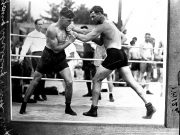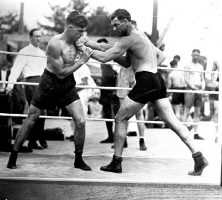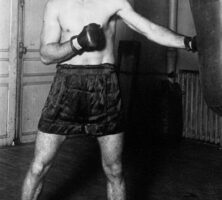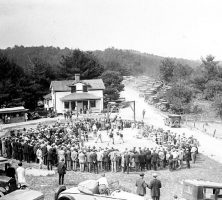Macon resident Young Stribling was a leading boxer in the heavyweight division during the late 1920s and early 1930s. He was defeated in several world title bouts, most notably against the German fighter Max Schmeling in 1931.
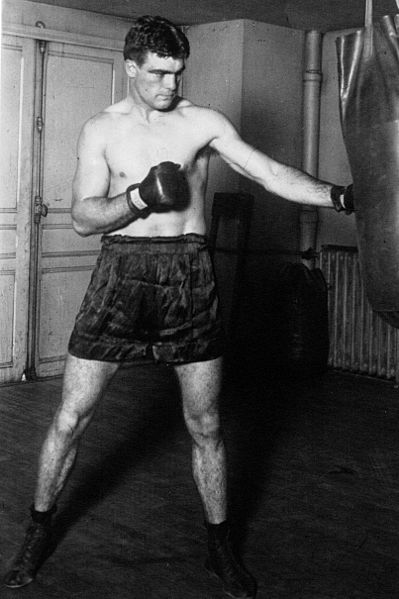
Photograph by Wikimedia
William Lawrence “Young” Stribling Jr. was born in Bainbridge on December 26, 1904, to Lily Braswell and William Lawrence Stribling. He grew up on the road as part of the Four Novelty Grahams, a traveling vaudeville company consisting of Stribling, his parents, and his brother, Herbert. As part of their act the two children fought each other in oversized gloves while their father acted as referee. As he grew older Stribling began to take on all-comers from the audience. At age sixteen he had his first professional fight, in Atlanta. Over the next nine years, he moved through seven weight divisions before settling as a heavyweight in 1929.
An 18,000-mile barnstorming tour across the country in 1925 earned Stribling the moniker King of the Canebrakes. Writer Damon Runyon invented the nickname to reflect Stribling’s popularity in rural areas. (He didn’t limit himself to visiting rural areas, however; in one publicity stunt he flew a plane over New York City and circled the Empire State Building.) Loved across Georgia, Stribling was an exemplary citizen, serving as an Elk, a Kiwanian, a Mason, and a Bible-class teacher who worked with disadvantaged children. He was also a lieutenant in the Army Reserve Air Corps and flew his own airplane to fights around the country. Black Georgians, though, were less sympathetic to Stribling, given his refusal to face African American fighters.
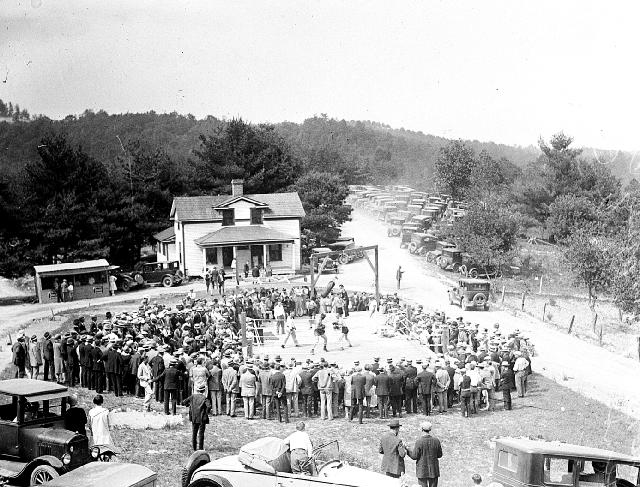
Courtesy of Special Collections & Archives, Georgia State University Library.
Despite a career record of 221 wins that included 125 knockouts (a record later broken by Archie Moore) and an armory of punches, including the Stribling Shift, Stribling never fulfilled his potential as a fighter. Experts from outside Georgia believed that his father was a poor manager and arranged too many bouts for his son. Indeed, Stribling participated in 285 professional fights in twelve years, often appearing outside the United States. Walk Miller, the manager of Tiger Flowers, also failed to improve Stribling’s performances, however. Cynics suggested that the handsome pugilist was better suited for Broadway roles.
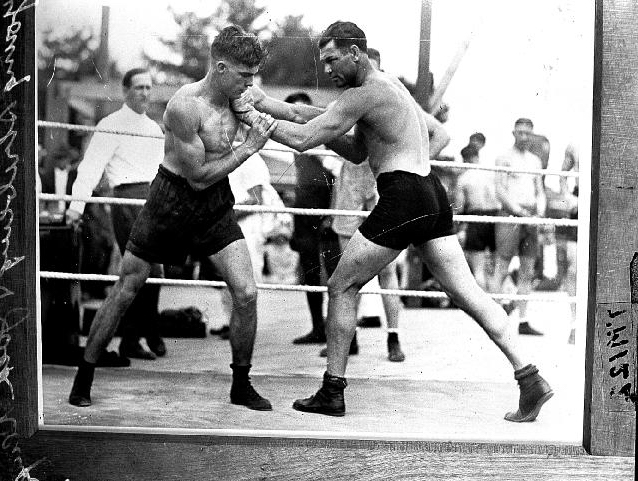
Courtesy of Special Collections & Archives, Georgia State University Library.
Stribling was killed in a motorcycle accident at the age of twenty-eight, on October 3, 1933. He was on the way to visit his wife and baby son in a Macon hospital when a car hit his motorcycle. According to sportswriter Paul Gallico, Stribling “was afraid of nothing that rolled on wheels or flew on wings, but was a coward in the ring.” Ralph McGill’s obituary in the Atlanta Constitution was much kinder, stating that “Georgia ha[d] taken this great young man to her heart, not realizing herself what a place he held in her heart until he was gone.”
Stribling’s funeral in Macon further reflected the scale of his support. Twenty-five thousand mourners walked past his coffin in the town’s auditorium and another 10,000 attended the service at Riverside Cemetery. Messages of condolence came from the likes of wealthy New York entrepreneur Cornelius Vanderbilt, golfer Bobby Jones, and Georgia governor Eugene Talmadge. A year later a group of prominent boxers, including famed Italian pugilist Primo Carnera, attended a memorial service for Stribling in Macon.
Stribling was inducted into the Georgia Sports Hall of Fame in 1965 and the International Boxing Hall of Fame, in Canastota, New York, in 1966.


